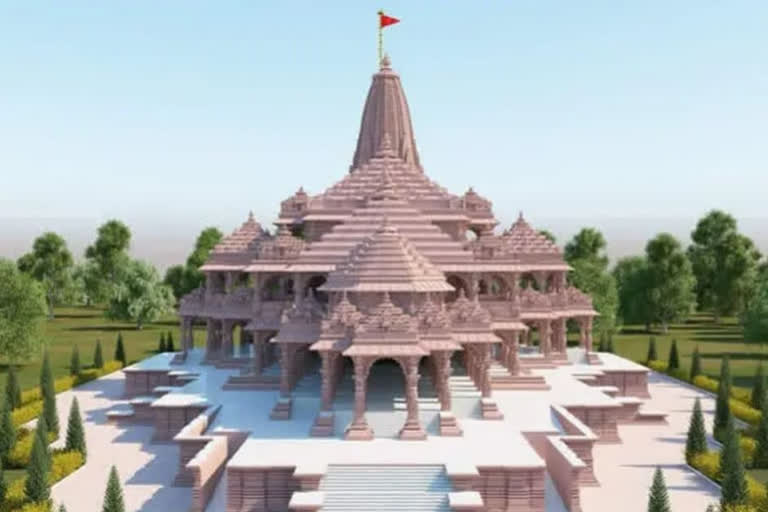Ayodhya: The construction of a grand Ram temple is in full-fledged progress and the committee formed to look after the ongoing mega project is leaving no stone unturned to make sure that the work completes in the stipulated time. The Ram Janmabhoomi Teerth Kshetra Trust has set the deadline to complete the project by end of 2023 and as per the progress report presented by the Construction Committee on Tuesday, it seems the target is likely to be met.
The Construction Committee headed by IAS Nirpendra Mishra presented the latest progress report on Monday according to which the temple construction has reached the Plinth stage. "The pedestal heightening work started on January 24, 202,2 and it was still in progress. The Plinth will be raised up to a height of 6.5 metres above the top of the raft. Granite stone blocks from Karnataka and Telangana are being used to heighten the Plinth. About 17,000 granite blocks each of size 5×2.5×3 ft. (LBH) will be used to complete this work, which will be completed by the end of September this year" said the progress report.
Also read: Raj Thackeray claims to have deferred Ayodhya trip to avoid cases on his workers
The installation of carved stones is about to commence and both the construction of the Plinth and installation of carved stones will go simultaneously. Pink sandstones from the hills of the Bansi-Paharpur area in the Bharatpur district of Rajasthan are being used in the construction of the temple. The stones have already started arriving from the craving site, which is located in Pindwara town of Sirohi district in Rajasthan. White marbles from the world-famous Makrana Hills of Rajasthan will be used for the inside area of the Garbhagrih. The carving work is already in progress and some carved stones have reached Ayodhya as well.
As per the progress report on the construction of the Ram temple in Ayodhya a total volume of 8 to 9 lakh cubic feet of carved sandstone will be used to build Parkota, 6.37 lakh cubic feet of carved granite for Plinth and about 4.70 Lakh cubic feet carved pink stone will be used for the temple. Around 13,300 cubic feet of carved white Makrana marble will be used in the construction of the sanctum sanctorum and 95,300 square feet for flooring and cladding. A meeting of the construction committee is held every month where each and every detail of the work in progress is discussed to ensure utmost accuracy and quality. The progress report concludes by saying that the ongoing construction work is a historic project to preserve and promote the cause of cultural nationalism based on holistic, altruistic and syncretic Rishi-Krishi culture.



